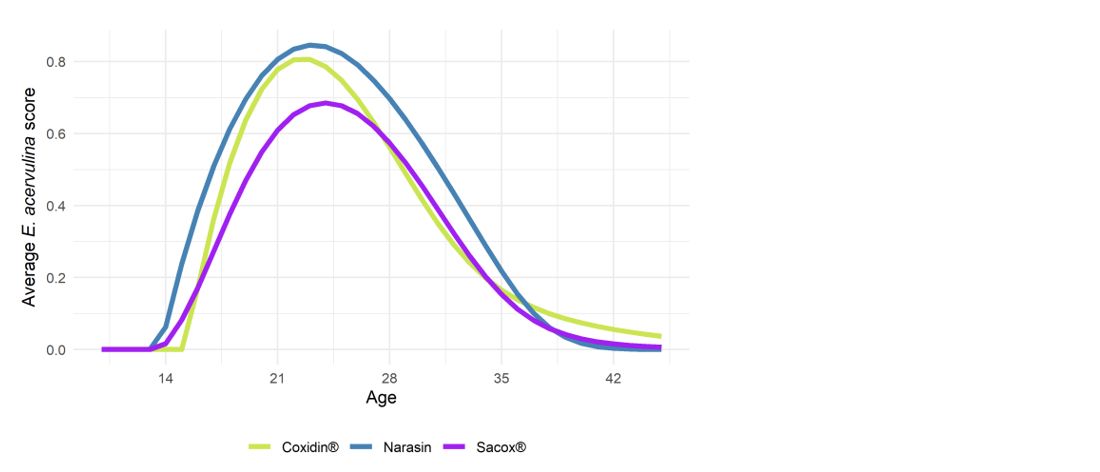In a previous Aviapp® communication, the impact of E. acervulina on feed conversion rate (FCR) was demonstrated. In this new report the efficacy of different ionophores on the control of E. acervulina is evaluated.
The data used to generate this report originates from European Aviapp users (who elected to anonymously share their data with Huvepharma®) starting from January 2019 until present. In total, data from 14 different European countries was available (Table 1).

Most ionophores are used in a shuttle; narasin is the only ionophore which is not used in a full programme. The data from Aviapp was filtered on shuttle programmes which use a maximum of two different coccidiostats. Most of the shuttles were either Monimax® or a nicarbazin + narasin combination followed by an ionophore. Monensin (Coxidin®), salinomycin (Sacox®) and narasin are the three different ionophores which are used and compared in the current report. If the monitoring session was performed when on a shuttle program, the score was attributed to the ionophore only if it was scored while being on the ionophore. If the monitoring took place while the birds were still on the first coccidiostat (combination product), the score was not considered. The age of the birds was filtered to range between 0 and 45 days, with a minimum of 20 flocks per age and program to be able to precisely estimate the age profile.
The overall lesion scores were the lowest with the salinomycin (Sacox), followed by monensin (Coxidin) and narasin (Figure 1). As described in the previous report, scores at the age of 28 days were the most impactful. Although for all ionophores the peak score was surpassed at this age, the difference was still about 0.2 on average at 28 days (0.7 for narasin vs 0.55 for Sacox and Coxidin). These are average differences, translating to an average difference of ~2 FCR points using our FCR - gut health model.

An age profile gives insightful information on a flock level basis. However, overuse of certain coccidiostats can lead to resistance and hence rotation should be kept in mind. To evaluate whether we see time trends in the three different ionophores, a time plot was made (Figure 2). The dotted black line indicates the linear direction of the average scores over the time. The increase of E. acervulina scores is much more pronounced for narasin compared to salinomycin (Sacox) and monensin (Coxidin). The increase is clearly seen in the narasin group as from the start of 2021, whereas Coxidin remains stable and Sacox even shows a slight reduction.

To conclude, Sacox is the best performing ionophore for controlling E. acervulina. It has the lowest average peak of E. acervulina scores when considering the age profile of the birds and over time it slowed the increase of E. acervulina lesions. The results over time also show the lowest variation compared with both other ionophores. For narasin, there was clearly an increase in E. acervulina lesions, suggesting that the control of E. acervulina is compromised when using narasin.



